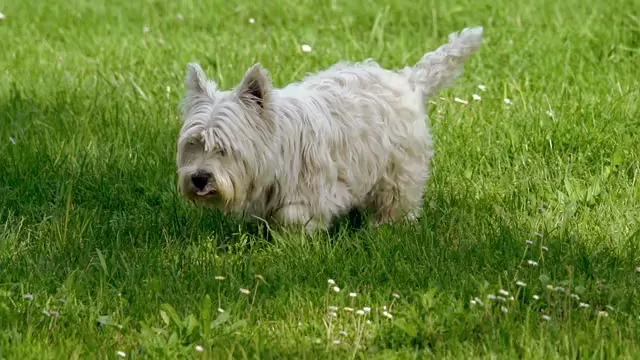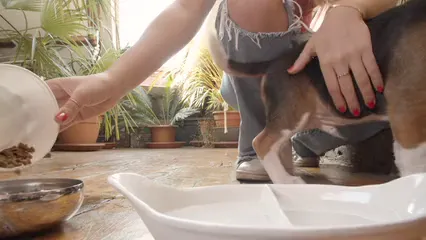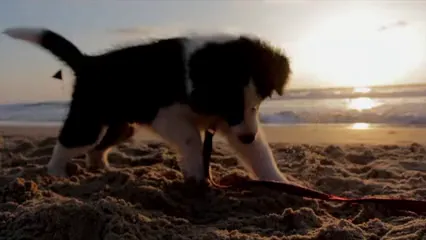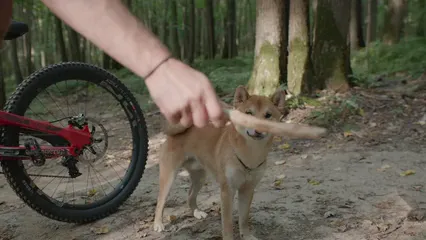Introduction
Understanding when dogs stop growing is vital for pet owners. Growth patterns vary significantly among different breeds and sizes. Knowing these timelines helps you prepare for your dog’s care, nutrition, and lifestyle needs. Being informed ensures you provide the best environment for your furry friend as they transition into adulthood.
Speaking of care, have you considered what your puppy eats? A great option to start with is Blue Buffalo Life Protection Formula Puppy Food. This kibble is packed with essential nutrients that promote healthy growth and a shiny coat, giving your puppy the best start in life!
Summary and Overview
Dog growth occurs in stages, influenced by various factors, including breed, genetics, and nutrition. Generally, small breeds mature quicker, reaching their full size by 6-12 months. Medium breeds typically finish growing around 12 months. In contrast, large breeds usually stop growing between 12-18 months, while giant breeds may continue developing until 18-24 months. Monitoring your dog’s growth is essential for adjusting their nutritional and health needs, ensuring they thrive during their formative years. Regular vet check-ups can help track progress and address any concerns.

And while you’re at it, consider adding some fun to their life. A ZippyPaws Burrow Squeaky Hide and Seek Plush Dog Toy will keep your pup entertained and mentally stimulated. Plus, who doesn’t love a good game of hide and seek?
Understanding Dog Growth
Growth Timeline by Size
Different breeds grow at distinct rates, and understanding this can help you anticipate your dog’s needs.
- Small Breeds: These dogs, like Chihuahuas or Pugs, usually stop growing by 6-12 months. Their rapid growth allows them to reach maturity quickly.
- Medium Breeds: Breeds such as Beagles and Cocker Spaniels typically finish growing by about 12 months. They may fill out slightly after reaching adult height.
- Large Breeds: Larger dogs, including Golden Retrievers and Boxers, generally stop growing between 12-18 months. Their bones take longer to fully develop.
- Giant Breeds: Breeds like Great Danes and Mastiffs can continue to grow until 18-24 months. Their growth plates remain open longer, allowing for additional height and weight gain.
Understanding these timelines helps you plan your dog’s diet and exercise. You can find a growth chart handy to track your puppy’s development based on their breed size. If you’re unsure about your dog’s breed specifics, consulting with your veterinarian can provide tailored insights into their growth patterns.

Additionally, keeping your dog’s environment clean is crucial. A reliable Nature’s Miracle Stain and Odor Remover can help you keep your home fresh and free from pesky pet-related messes.
Factors Affecting Growth
When it comes to your dog’s growth, several key factors play a crucial role. Let’s break them down.
Genetics is a primary influencer of your dog’s adult size. Each breed has its unique growth patterns, determined by the traits passed down from their parents. Purebred dogs often have predictable growth trajectories, while mixed breeds may vary. For instance, a Great Dane will grow much larger than a Chihuahua, thanks to genetic differences.
Next, nutrition is vital for healthy growth. A balanced diet rich in vitamins, minerals, and proteins supports your pup’s development. Puppies require specific food formulated for their growth stage. Feeding the right amount helps prevent obesity, which can lead to health issues later on. For example, the PetFusion Ultimate Dog Bed provides a cozy place for your pup to rest after a long day of growth and play.
Finally, your dog’s lifestyle and environment significantly affect their growth. Regular exercise promotes muscle development and overall health. On the other hand, stress or inadequate care can hinder growth. Studies show that puppies raised in nurturing environments grow better, showing the importance of a loving home.
If you’re concerned about your puppy’s growth, consider consulting a veterinarian. They can provide personalized advice tailored to your dog’s specific needs.

Nutrition for Growing Puppies
Feeding Guidelines
Puppies require special nutrition to support their growth. The type of food you choose matters significantly. Puppy food is formulated specifically for their developmental needs. It contains higher levels of protein, fat, and essential nutrients compared to adult dog food. Feeding your puppy adult food too soon can lead to nutritional deficiencies.
It’s essential to follow feeding guidelines carefully. Overfeeding can lead to obesity, which poses serious health risks. Puppies grow rapidly, and their energy needs are high. Adjust feeding amounts according to their age and size. Regular vet visits can help monitor their growth and adjust their diet as needed. For tailored dietary recommendations, consider consulting your veterinarian.

And while you’re ensuring your puppy gets the right nutrition, don’t forget about their dental health! Nylabone DuraChew Textured Dog Chew is perfect for keeping their teeth clean while they chew away!
Preventing Obesity
Preventing obesity starts with monitoring your puppy’s weight and diet closely. Obesity can lead to severe health problems, including joint issues and diabetes. Puppies are more susceptible to rapid weight gain, especially large breeds.
To help manage their weight, practice portion control. Divide daily food into several meals to avoid overfeeding. Stick to a consistent feeding schedule and avoid giving excessive treats. Engage your puppy in regular play and exercise to maintain a healthy weight. Tracking their growth can help identify any concerning trends. If you notice weight gain or loss, consult your vet for guidance.

Exercise for Growing Puppies
Safe Exercise Practices
Exercise is crucial for a puppy’s development, but it must be done safely. Puppies have boundless energy, but their bodies are still growing. Too much high-impact activity can cause injuries. Gentle walks on soft surfaces are ideal for young pups.
For smaller breeds, short play sessions can suffice. Larger breeds need moderate exercise tailored to their growing bodies. Avoid activities like jogging or jumping until they are fully matured.
Always supervise playtime and adjust activities based on your puppy’s energy levels. Keep in mind that socialization is also an essential aspect of exercise. Encourage interactions with other dogs and people in safe environments. Creating a well-rounded exercise plan can ensure your puppy grows healthy and strong.

To help with their exercise routine, consider using a PetSafe Automatic Ball Launcher. It keeps your pup entertained while you take a well-deserved break from throwing the ball!
Monitoring Your Dog’s Growth
Signs of Maturity
Recognizing when your dog has reached full size is essential. Several signs indicate maturity, both in weight and height. Typically, small breeds, like Chihuahuas, reach their adult size by 6-12 months. Medium breeds finish growing around 12 months, while large breeds may continue until 18 months. For giant breeds, it can take up to 24 months.
One clear sign of maturity is the change in weight. If your dog consistently maintains their weight over a few months, they may have completed their growth. Additionally, look for physical signs, such as closed growth plates. A veterinarian can confirm this through X-rays. Once the growth plates close, your dog has reached its final size.
Monitoring your dog’s growth helps ensure they are healthy. Regular vet check-ups can provide valuable insights into their development. This way, you can address any potential concerns early on, making sure your furry friend stays fit and happy.

And if you’re looking for some great training tools, a Dog Training Clicker can be a game changer in teaching your pup new tricks!
Conclusion
In summary, dogs typically stop growing between 6 and 24 months, depending on their breed size. Factors such as genetics, nutrition, and overall health influence this timeline. Proper care during your puppy’s growth stages is vital for their long-term health. If you have concerns about your dog’s growth, seeking professional advice is always a good idea. Your veterinarian can provide the best guidance tailored to your furry companion’s needs.
FAQs
What should I feed my growing puppy?
Feeding your growing puppy the right food is crucial. Puppies have unique dietary needs that differ from adult dogs. Choosing high-quality puppy food is essential for their growth. This food is rich in proteins and nutrients necessary for developing bones and muscles. It’s important to follow feeding guidelines on the packaging. These guidelines help you determine the right portion sizes based on your puppy’s age and weight. Overfeeding can lead to obesity, which poses health risks later. Aim for multiple small meals throughout the day, especially for young puppies. Monitor your puppy’s weight and adjust their food as needed. If they seem too chubby, consider reducing portion sizes. Consulting your veterinarian can provide personalized dietary advice tailored to your puppy’s specific breed and growth needs.
How much exercise does my puppy need?
Exercise is vital for your puppy’s development. However, the amount of exercise varies by breed and age. Small breeds, like Chihuahuas, require less exercise compared to large breeds, like Labradors. For young puppies, short play sessions are ideal. Aim for 5 minutes of exercise per month of age. For example, a 3-month-old puppy benefits from about 15 minutes of play. As they grow, gradually increase this time. Avoid high-impact activities, like running or jumping, until they are fully grown. Large breeds should not engage in intense activities until 14 to 18 months of age. Always supervise playtime and watch for signs of fatigue. Keeping your puppy active helps them stay healthy and builds strong muscles.
Can I predict how big my puppy will get?
Estimating your puppy’s adult size can be tricky but possible. One method is to consider the breed’s typical growth patterns. Generally, smaller breeds reach full size faster than larger ones. Another way to predict size is by looking at the size of the puppy’s parents. If both parents are large, it’s likely your puppy will be too. For mixed-breed dogs, predicting size can be more challenging, but feeling the ribs can help. If you can still feel the ribs, they may continue to grow. Veterinarians can also provide insights into your puppy’s expected size based on breed and family history. Knowing how big your puppy will get helps prepare for future needs.
What are common growth issues to watch for?
As your puppy grows, keep an eye out for potential growth issues. Some common concerns include rapid weight gain, which can lead to obesity. This condition can cause joint problems and other health issues later. Watch for signs of growing pains, especially in larger breeds. Symptoms can include reluctance to play, limping, or whining when touched. Another issue is improper nutrition, which can stunt growth or lead to developmental disorders. Regular vet check-ups are essential for monitoring growth and health. Your veterinarian can help identify any concerns early and offer guidance on nutrition and exercise. Staying proactive ensures your puppy grows into a healthy adult dog.
Please let us know what you think about our content by leaving a comment down below!
Thank you for reading till here 🙂 Don’t forget to check out some essential items like a Dog Crate with Divider or a Dog First Aid Kit to keep your furry friend safe and sound!
All images from Pexels





